As with any other service professional, the relationship you have with your esthetician should be built on honesty and trust. Not to be confused with a dermatologist who treats skin diseases such as eczema, rosacea, and psoriasis, an esthetician is a licensed professional who specializes in the beautification of the skin. This is achieved through cosmetic treatments such as facials, chemical peels, body treatments, and waxing.
While they are not medical doctors, there are also medical estheticians who care for the skin pre- and post-surgery, perform laser treatments and intense peels, and administer injectables such as Botox. A separate license and training program is required for this type of esthetician.
The relationship with your esthetician
Considering the average cost of a facial in the United States is between $60 and $90 (but it can easily be upwards $250-plus), you definitely want to get the most out of your investment. When I was in the treatment room with my clients at the Peninsula Hotel Chicago, I always made sure to take my time with the consultation portion of the service to ensure that I could address every question and concern in an effort to craft an effective home skin care regimen.
This intel is almost as important as the facial itself, so never feel intimidated about speaking to your technician in detail—look at it like a doctor’s appointment.
What are you putting on your skin?
While today’s consumers are becoming increasingly savvy when it comes to product knowledge, unfortunately, there are some players in the beauty industry who continue to use manipulative tactics to trick consumers. Studies show that people are driven by their emotions—not intelligence—when making brand decisions and many companies are banking on these facts.
Researchers have found that consumer satisfaction is at an ultimate high when beauty brands strengthen feelings of positive emotion by giving the perception that consumers are “caring for oneself.” But what’s disturbing about this information is that some skin care products are being presented as “safe” and “natural” are anything but.
Avoid these at all costs
So, along with finding a trusted esthetician, the best thing you can do to combat consumer deceit is to arm yourself with knowledge. To help you out, we put together a list of 11 toxic ingredients to avoid at all costs, as per estheticians—many people don’t realize that some of these ingredients are actually damaging to the skin.
So, go through all of your cabinets and drawers and get ready to conduct a serious product makeover.
11 ingredients or products prohibited by estheticians
1. Parabens (preservatives)
Parabens are a family of related chemicals that are commonly used as preservatives in an astonishing 85 percent of health, beauty, skin care, and personal care products. There is typically more than one paraben in a product and are often times used with a combination of other preservatives to prevent the growth of a broad range of microorganisms, mold, fungus, and parasites.
While there are numerous studies that link parabens to breast cancer in women and testicular cancer in men, the FDA continues to review all of these studies. so far there hasn’t been any conclusive evidence, even despite the fact that people continue to have negative reactions. Parabens can appear in different forms, so here’s what you want to look out for:
- Benzylparaben
- Butylparaben
- Propylparaben
- Methylparaben
- Ethylparaben
- Isobutylparaben
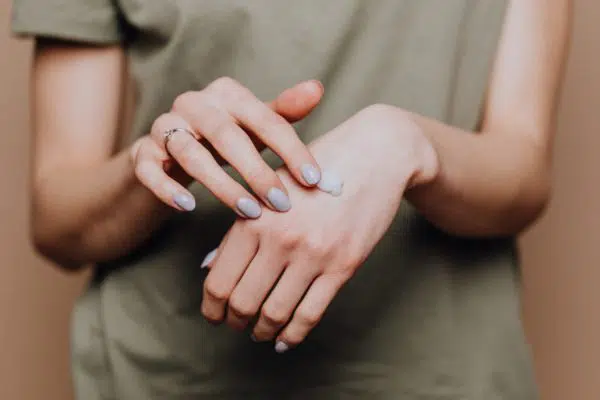
2. Phthalates
In the past, the primary phthalates used were dibutyl phthalate (DBP), which served as a plasticizer in products such as nail polishes (to reduce cracking and increase strength) by making them less brittle); dimethyl phthalate (DMP), used in hair sprays (to prevent stiffness); and diethyl phthalate (DEP), used as a solvent and fixative in fragrances.
According to an FDA's survey of cosmetics conducted in 2010, DBP and DMP are becoming more obsolete, likely because they act as a hormone disruptor and are linked to fertility issues.
Today, DEP is the only phthalate still commonly used in cosmetics, which means it could still be lurking in products that list “fragrance” as one of the ingredients—opt for formulas scented with essential oils instead. However, the tricky part is this ingredient is not listed on the label of some products.
3. Benzoyl Peroxide
This ingredient is used to treat mild to moderate acne by reducing the amount of acne-causing bacteria and by causing the skin to dry and peel. As if skin irritation wasn’t bad enough, benzoyl peroxide has also been linked to the promotion of tumor growth and has been identified as a skin, eye, and respiratory irritant.
Opt for more natural skin care remedies for acne that incorporate natural ingredients like tea tree oil.
4. Triclosan
Triclosan is an antifungal agent that’s used for its antibacterial properties. It was introduced in hospitals in the ‘70s to keep medical implements sterile—but it was first registered as a pesticide in 1969, so it’s no surprise that it’s terrible for the environment.
Despite the fact that numerous studies indicate triclosan is a hormone and thyroid disruptor, today it’s seen everywhere from face washes for acne to hand sanitizers. It’s important to point out that not all bacteria is bad that this chemical could give rise to “superbugs”—harmful bacteria resistant to antibiotics. Simple soap and water is enough to get a proper cleanse.
In fact, according to the CDC (Centers for Disease Control), antibacterial products are no more effective than regular, old-fashioned soap and water for killing disease-causing germs. Not to mention they are less expensive and don’t kill healthy bacteria.
5. Resorcinol
Resorcinol and 2-Methylresorcinol are typically used in the formulation of hair dyes, but Resorcinol is also used used in acne and skin treatment medication to remove hard, scaly, or rough patches skin. Ironically, it’s been cited as a skin irritant and has been known as a thyroid-active ingredient since its use in topical ointment formulations back in the second half of the 19th century.
6. Hydroquinone
Hydroquinone is a popular skin lightener that works by reducing melanin in the skin. The problem is that along with altering your pigment, you’re weakening the elastin and collagen in the areas where the product is applied, thus creating an entirely new skin concern as now you’re dealing with loss of elasticity and more prominent fine lines and wrinkles. There’s no doubt that this ingredient has a reputation for being controversial.
7. Petroleum
Yes, that petroleum. The very same substance from which your motor oil is made is also lurking in your skin care products .It contains 1,4-Dioxane, which has been listed by the World Health Organization and the Environmental Protection Agency as a probable carcinogen. It hides behind many names, so be sure to familiarize yourself with them. They are:
- Petrolatum
- Xylene
- Toluene
- Mineral oil
- Liquid paraffin
8. Methylisothiazolinone
Known simply as MIT, methylisothiazolinone is an antibacterial preservative that can be found in products such as shampoos, lotions, emulsions, and sunscreens. Studies indicate that MIT is a potential neurotoxicant—a type of poison that work on the nervous system. Buyer beware. This substance can also be found in products labeled as “natural” by companies trying to sell “green” products. MIT also goes by other names, so avoid products with the following:
- 4-Isothiazolin-3-one, 5-chloro-2-methyl-
- 5-Chloro-2-methyl-4-isothiazolin-3-one
- Methylchloroisothiazolinone
- 3(2H)-Isothiazolone, 5-chloro-2-methyl-
- BRN 1210149
- EINECS 247-500-7
- Kathon CG 5243
9. Artificial dyes and synthetic colors
This is a tough one because artificial dyes and synthetic colors are in a lot of products to make them more appealing, but also to deposit color, as in cosmetics and hair dye (there’s up to 25 synthetic additives are needed to create one artificial dye.) The toxins present in dyes and synthetic colors increase your risk or skin irritation and sensitivity due to the heavy metals they deposit on your skin. But that’s not the worst.
Studies indicate that dyes made from coal tar are carcinogenic. Avoid anything listed beginning with FD&C or D&C as they have been linked to nervous system toxicity, reproductive system disruption, allergic reactions, skin irritations, and even cancer.
10. Abrasive scrubs
There’s a lot of controversy about whether or not physical exfoliants (like a scrub) are safe (especially after Kylie Jenner’s Kylie Skin Walnut Face Scrub lawsuit that allegedly harmed the skin of copious users and is being compared to that of St. Ives’ iconic apricot scrub) because they can potentially cause microtears in the skin.
Instead of abrasive ingredients, opt for a chemical exfoliant that dissolves dead skin versus aggressively sloughing it off. While “chemical” sounds more harsh, unlike the physical variety, those with acids or enzymes don’t require scrubbing and work on a more gradual level.
This is good news for those who have problems and/or sensitive skin as this type of exfoliant can be more mild. When searching for an over-the-counter chemical exfoliant, look for ingredients such as glycolic acid, lactic acid, or enzymes—fruit or otherwise.
11. Denatured alcohol
Alcohol such as this is used in creams to make them feel lighter and to help with the penetration of other ingredients. However, it’s a counterproductive ingredient because it can cause dryness, irritation, and even cause erosion of the skin’s surface layer, thus causing a weakened barrier.
Opt for formulas with nourishing ingredients instead. For example, keep an eye out for skin care products that are formulated with antioxidants, ceramides, peptides, hyaluronic acid, and niacinamide.
The bottom line: stick to organic and clean products
This is obviously a lot of information to digest, and considering there are still ongoing reports and inconclusive evidence on some of these ingredients, navigating the world of beauty products can be an intimidating, frightening, and at times, a disheartening process. The advice of an esthetician can help, but make sure you do your research in order to find a trusted professional—not just someone pushing random products on you just to receive a commission.
Know that this is a slippery slope for many technicians because their performance is gauged on product sales, so you’re not really knowing if the products you’re buying are skin safe. To get around this, look for a spa that specializes in organic treatments, as it’s likely that they will have organic products to compliment their business model. This takes the guesswork about wondering whether or not the skin care you’re purchasing are riddled with any of the ingredients on this list.
Switch to clean beauty
While regular facials (ideally, once a month) are definitely an important part of any skin care routine, at the end of the day it’s the little things—like pure ingredients in skin care products—that make the biggest difference. Organic skin care is having a moment and it’s definitely trending to stay for the long-term.
If you’re new to this world, take the clean complexion challenge by trying out a wildcrafted sample kit from Annmarie. Prove to yourself that you need not incorporate harmful chemicals to achieve beautiful skin without compromising your health. Who knows? You may even want to skip your makeup all together.
SOURCES:
“How Much Does a Facial Cost?”, Thervo https://thervo.com/costs/how-much-does-a-facial-cost
“Emotional Advertising: How Brands Use Feelings to Get People to Buy,” Hubspot,
https://blog.hubspot.com/marketing/emotions-in-advertising-examples
“Cosmetic Industry Driven By Emotions,” PsychCentral, August 8, 2018,
https://psychcentral.com/news/2011/07/25/cosmetics-industry-driven-by-emotions/28016.html
“Parabens in Cosmetics,” U.S. Food and Drug, February 22, 2018,
https://www.fda.gov/cosmetics/cosmetic-ingredients/parabens-cosmetics
“Are the Parabens in Your Beauty Products Dangerous?”, Reviews.com, January 6, 2018 https://www.reviews.com/blog/know-parabens-beauty-products/
“Phthalates,” U.S. Food and Drug, December 5, 2013, https://www.fda.gov/cosmetics/cosmetic-ingredients/phthalates#cos
“Triclosan Facts,” United States Environmental Protection Agency, March 2010, https://archive.epa.gov/pesticides/reregistration/web/html/triclosan_fs.html
“Triclosan and Endocrine Disruption: Evidence for Alterations in Thyroid Hormone Homeostasis,” United States Environmental Protection Agency, November 11-15, 2007,
https://cfpub.epa.gov/si/si_public_record_Report.cfm?Lab=NHEERL&dirEntryID=175343
“Antibacterial Soap vs. Regular Soap: Which One Is Better?”, Blank Children’s Hospital UnityPoint Health,
https://www.unitypoint.org/blankchildrens/article.aspx?id=68ac1797-834f-409c-947b-4df322b04380
“Methylisothiazolinone, a Neurotoxic Biocide, Disrupts the Association of SRC Family Tyrosine Kinases With Focal Adhesion Kinase in Developing Dortical Neurons,” U.S. National Library of Medicine National Institutes of Health, https://www.ncbi.nlm.nih.gov/pubmed/16547166



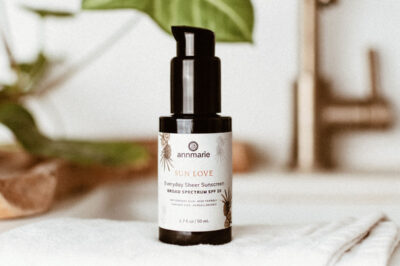
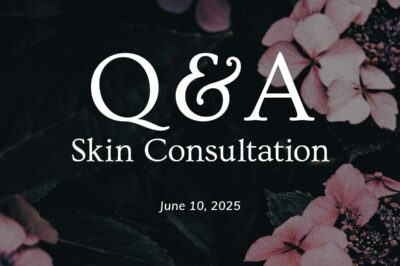

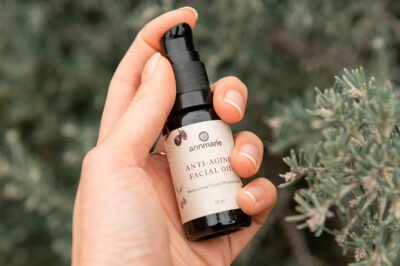
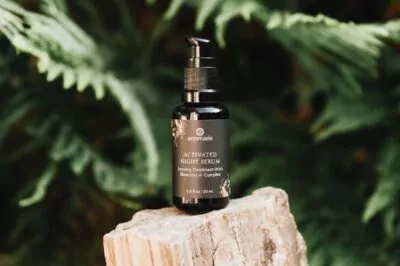
Leave a Reply